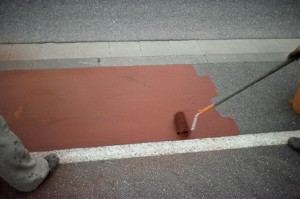Top Coat Cement Choices: Exploring the Options as well as the Differences.
What is the right choice to top coat cement with and why is it important to choose the right one?
There are many different kinds of sealers and floor systems that act as a top coat cement. For instance there are various kinds of waxes, urethanes, and epoxies. There are also various categories of acrylics certainly, but what Silikal uses as a top coat cement is enhanced MMA.
There are of course, problems with other kinds of top coat cement. Take for instance waxes. Waxes will obviously coat cement, and you can use food grade waxes if that’s important to you. The problem is that once applied, it will need to be buffed, usually machine buffed, thus you will have down time and the cost of that person to buff the waxed top coat cement. Finally, the process will have to be repeated approximately once a month to maintain the proper shine on the cement.
Urethanes used as a top coat cement must be applied in temperatures between 50° F and 85° F, and priming is obligatory in order to prevent blistering as well as outgassing. Full chemical resistance will be available only 7 days after application, full service within 48 hours after application, light wheel traffic within 24 hours after application, and foot traffic within 8 hours after application.
Epoxies used as a top coat cement also present their own problems, especially in preparation which must be impeccable in addition to a possibility of surface salts or ions in the concrete itself, water flow before, during or after application, vapor pressure problems, or if applied to either very old or very new concrete. Creating the perfect mix ration is sometimes next to impossible, also resulting in problems in the future with epoxies.
When Silikal is used as a top coat cement however, it is dry to any use, traffic, full chemical resistance, or water resistance within one hour of application. There is no blistering, or outgassing, and it need not be repeated, nor will there be leaching of any surface salts or ions in the concrete itself, besides being totally slip proof.


